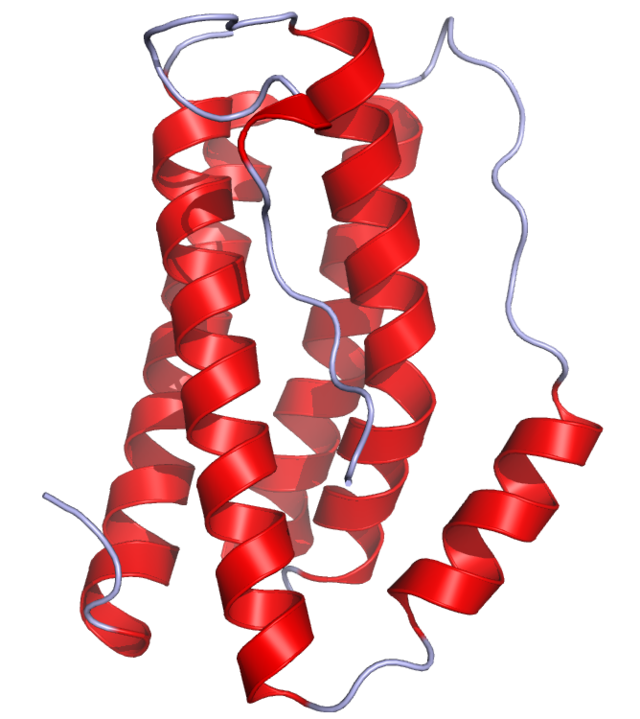Inflammation Predicts Depression Persistence
Links between inflammation and depression continue to be identified in new research. Researcher N. Vogelzangs et al. reported in a 2014 article in Neuropharmacology that inflammatory and metabolic dysregulation in antidepressant users predicted an outcome of depression two years later. Elevated levels of the marker of inflammation Il-6, low HDL (or “good”) cholesterol, high triglycerides, and high blood sugar were associated with poor response to medication and chronicity of depression. Of 315 people treated with antidepressants (average age 43), 138 were in remission at 2 years, while 177 (56.2%) were still depressed. People with four or more types of inflammatory or metabolic dysregulations had a 90% chance of still being depressed at 2 years.
Among inflammatory markers including CRP and TNF-alpha, IL-6 alone was associated with chronic depression. Il-6 can cross the blood-brain barrier. We have previously reported that researcher Scott Russo found that in rats in a depression-like state known as defeat stress (brought about by repeated defeat by a larger rodent), blocking Il-6 can prevent depressive behaviors such as social avoidance or loss of preference for sucrose.
Like inflammation, metabolic abnormalities also complicate depression. Lipid dysregulation and hyperglycemia are associated not only with depression persistence, but also with the new onset of depression in humans.
Vogelzangs et al. conclude that these data “ suggest that inflammatory and metabolic dysregulation worsens depression course owing to reduced [antidepressant] response and that alternative intervention treatments may be needed for depressed persons with inflammatory and metabolic dysregulation.”
It is noteworthy that a 2014 meta-analysis of the anti-inflammatory drug celecoxib (Celebrex) published by Farhad Faridhosseini et al. in Human Psychopharmacology, showed that the drug, often prescribed for arthritis, is effective for unipolar depression when added to patients’ regular treatment.
It remains to be ascertained whether celecoxib’s effects are seen in depression in general, or if they pertain only to the 30% of depressed patients who show inflammation at baseline. Typical markers of inflammation include Il-6, CRP, TNFa, and Il-1.
Statins, prescribed to lower cholesterol, also have anti-inflammatory effects, and are also effective in preventing depression.
Determining treatment approaches for those patients showing signs of inflammation or metabolic irregularities remains a high priority for study. The preliminary data noted here suggest that treating these dysregulations in those with depression may be useful.
Keep Your Heart and Cardiovascular System Healthy
 Middle aged folks, watch your risk factors for cardiovascular disease. These include: high blood pressure, cholesterol, weight, and blood sugar (diabetes).
Middle aged folks, watch your risk factors for cardiovascular disease. These include: high blood pressure, cholesterol, weight, and blood sugar (diabetes).
According to Heartwire, an article in the New England Journal of Medicine indicates that having any of these risk factors increases the likelihood of cardiovascular disease later in life. The more risk factors one has, the greater the increase in risk.
Across the whole meta-analysis, participants with no risk factors at age 55 (total cholesterol level: <180 mg/dL;
blood pressure: <120 mm Hg systolic and 80 mm Hg diastolic; nonsmoking; nondiabetic) had drastically better odds
of avoiding death from cardiovascular disease through the age of 80 than participants with two or more major risk
factors (4.7% vs 29.6% among men and 6.4% vs 20.5% among women).People with an optimal risk-factor profile also had lower lifetime risks of fatal coronary heart disease or nonfatal MI (Editor’s Note: myocardial infarction, or heart attack) (3.6% vs 37.5% among men, <1% vs 18.3% among women) and fatal or nonfatal stroke (2.3% vs 8.3% among men,
5.3% vs 10.7% among women), compared with those with two or more risk factors.
What this article does not mention is that depression is a risk factor for coronary artery disease, and should be treated just as aggressively and persistently as the other cardiovascular risk factors.
Also as we’ve written before in the BNN, exercise is one element of a healthy life style that can positively affect all of these risk factors. Starting a healthy diet and exercise regimen in middle age will have long-term positive effects and reduce risks later in life.


